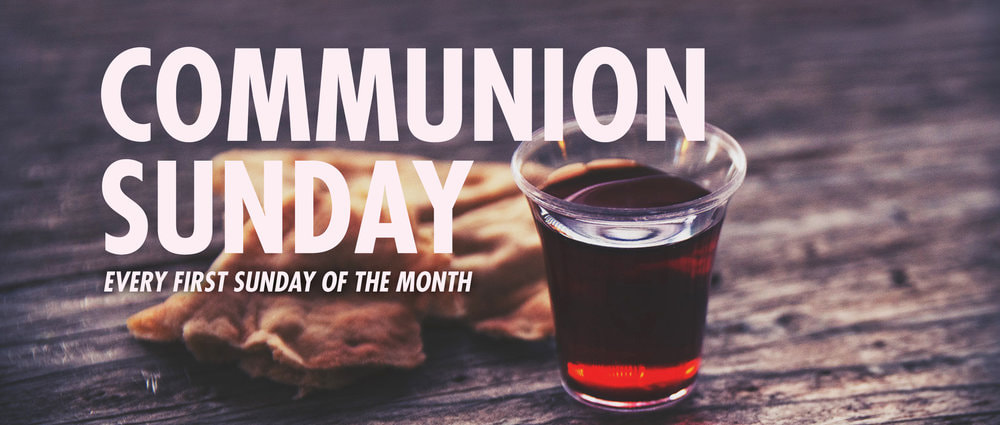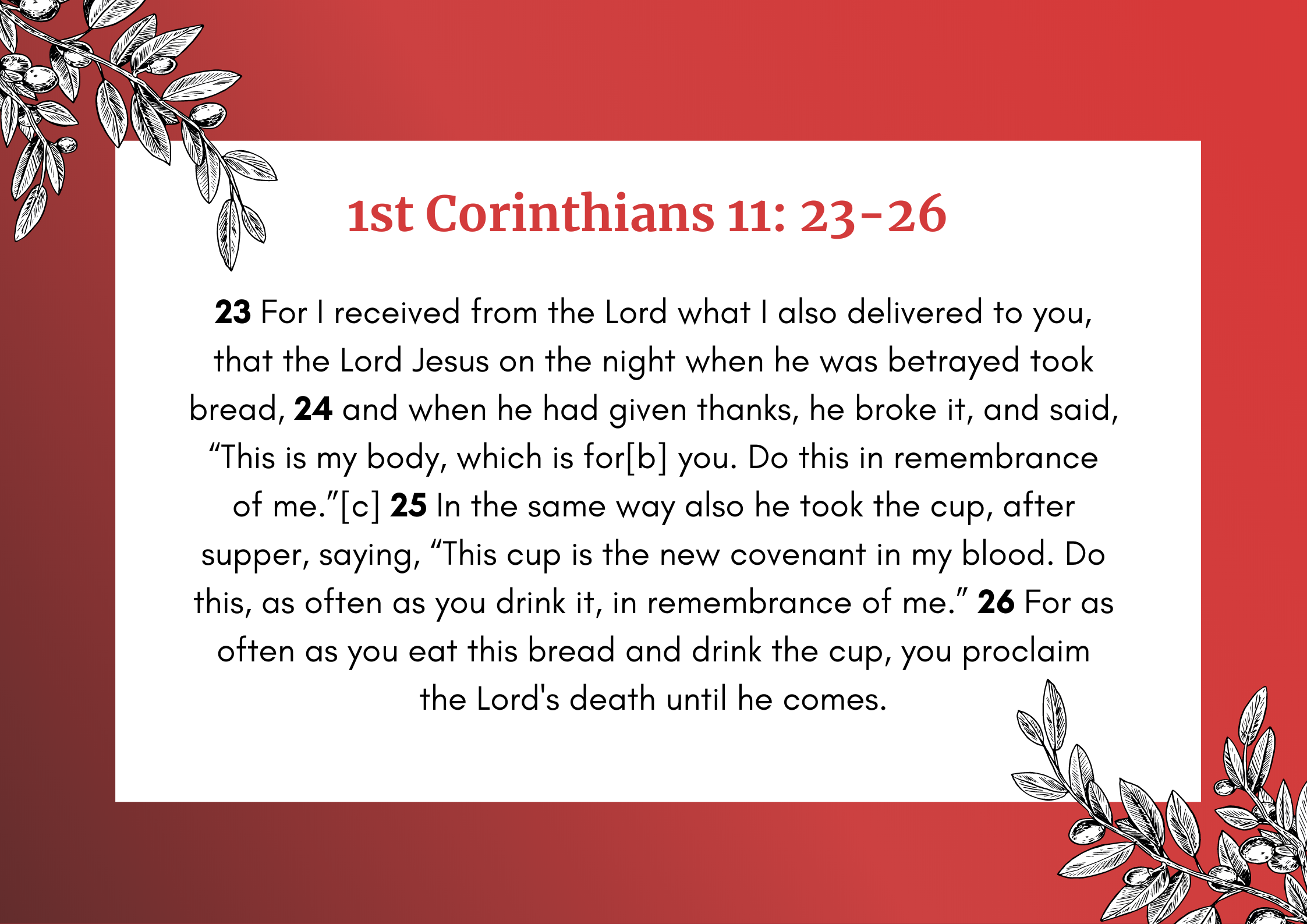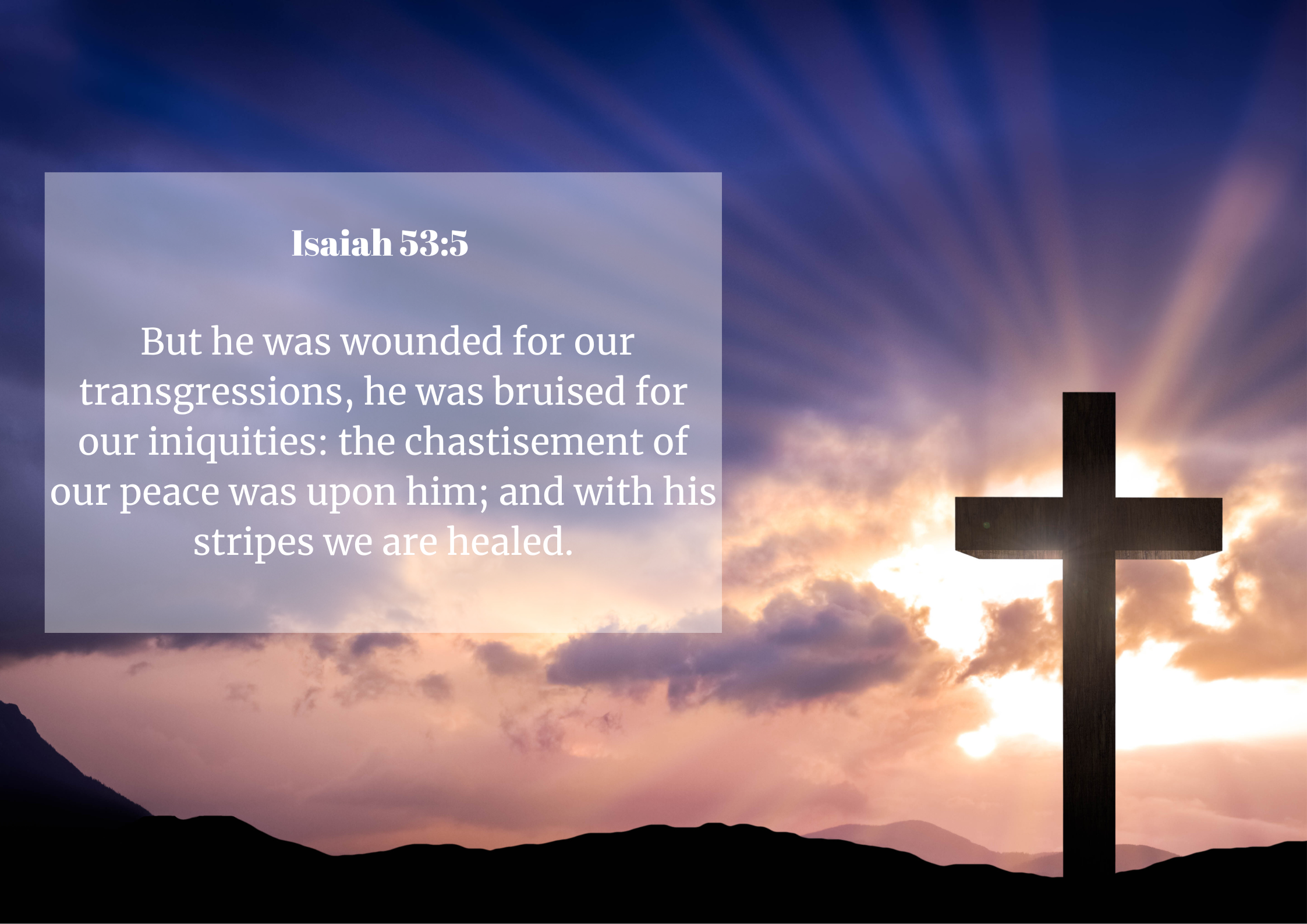Holy
Communion


Jesus used a meal to institute one of the most universal and unforgettable ordinances of the church.
Communion (sometimes referred to as the Lord’s Supper or the Eucharist) is based on the Passover, a ritual meal in which Jewish people eat a lamb, which reminds them of the lamb sacrificed so that they could be delivered from Egyptian bondage (Ex 12:1–13).
While observing the last Passover meal prior to his crucifixion, Jesus used the broken bread and the full cup as symbols of his life, which would soon be sacrificed for his followers.
Through the breaking of the bread, his disciples saw Christ’s brokenness and suffering. Drinking from the cup, they realized that his blood was being shed for their sins. No wonder that some call this the Eucharist (the cup of blessing).
Truly, in taking Communion we unite in giving thanks to God. Communion expresses our unity in Christ. Through his brokenness, we have become one. Through his death, we have received life.

As the family of God, made up of believers of all faiths and races, tribes and tongues, we unite in obedience to the teaching of Christ: “Do this in remembrance of me” (1 Cor 11:25–26). This ritual helps us to remember the price that was paid and the forgiveness we have experienced. Some Christians partake of Communion each week. Others observe it once each quarter or at other significant celebrations in the church year. Communion reminds us that we cannot save ourselves. Therefore, when Communion is served, it is a good time to examine ourselves (1 Cor 11:28) and make certain that we are able to give thanks for this great salvation
